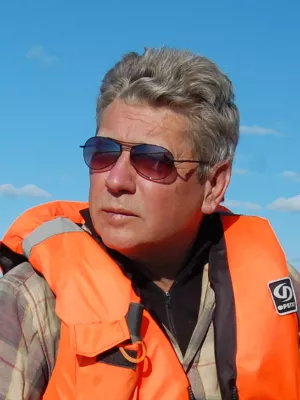
Per Möller
Professor

A comparative study of ancient sedimentary DNA, pollen and macrofossils from permafrost sediments of Northern Siberia reveals long-term vegetational stability
Author
Summary, in English
Abstract in Undetermined
Although ancient DNA from sediments (sedaDNA) has been used to investigate past ecosystems, the approach has never been directly compared with the traditional methods of pollen and macrofossil analysis. We conducted a comparative survey of 18 ancient permafrost samples spanning the Late Pleistocene (4612.5 thousand years ago), from the Taymyr Peninsula in northern Siberia. The results show that pollen, macrofossils and sedaDNA are complementary rather than overlapping and, in combination, reveal more detailed information on plant palaeocommunities than can be achieved by each individual approach. SedaDNA and macrofossils share greater overlap in plant identifications than with pollen, suggesting that sedaDNA is local in origin. These two proxies also permit identification to lower taxonomic levels than pollen, enabling investigation into temporal changes in species composition and the determination of indicator species to describe environmental changes. Combining data from all three proxies reveals an area continually dominated by a mosaic vegetation of tundra-steppe, pioneer and wet-indicator plants. Such vegetational stability is unexpected, given the severe climate changes taking place in the Northern Hemisphere during this time, with changes in average annual temperatures of >22 degrees C. This may explain the abundance of ice-age mammals such as horse and bison in Taymyr Peninsula during the Pleistocene and why it acted as a refugium for the last mainland woolly mammoth. Our finding reveals the benefits of combining sedaDNA, pollen and macrofossil for palaeovegetational reconstruction and adds to the increasing evidence suggesting large areas of the Northern Hemisphere remained ecologically stable during the Late Pleistocene.
Although ancient DNA from sediments (sedaDNA) has been used to investigate past ecosystems, the approach has never been directly compared with the traditional methods of pollen and macrofossil analysis. We conducted a comparative survey of 18 ancient permafrost samples spanning the Late Pleistocene (4612.5 thousand years ago), from the Taymyr Peninsula in northern Siberia. The results show that pollen, macrofossils and sedaDNA are complementary rather than overlapping and, in combination, reveal more detailed information on plant palaeocommunities than can be achieved by each individual approach. SedaDNA and macrofossils share greater overlap in plant identifications than with pollen, suggesting that sedaDNA is local in origin. These two proxies also permit identification to lower taxonomic levels than pollen, enabling investigation into temporal changes in species composition and the determination of indicator species to describe environmental changes. Combining data from all three proxies reveals an area continually dominated by a mosaic vegetation of tundra-steppe, pioneer and wet-indicator plants. Such vegetational stability is unexpected, given the severe climate changes taking place in the Northern Hemisphere during this time, with changes in average annual temperatures of >22 degrees C. This may explain the abundance of ice-age mammals such as horse and bison in Taymyr Peninsula during the Pleistocene and why it acted as a refugium for the last mainland woolly mammoth. Our finding reveals the benefits of combining sedaDNA, pollen and macrofossil for palaeovegetational reconstruction and adds to the increasing evidence suggesting large areas of the Northern Hemisphere remained ecologically stable during the Late Pleistocene.
Department/s
- Quaternary Sciences
Publishing year
2012
Language
English
Pages
1989-2003
Publication/Series
Molecular Ecology
Volume
21
Issue
8
Links
Document type
Journal article
Publisher
Wiley-Blackwell
Topic
- Geology
Keywords
- ancient sedimentary plant DNA
- macrofossils
- palaeoecology
- pollen
Status
Published
Project
- Taymyr revisited - a quest for former Eurasian Ice Sheets margins and megafauna extinction during the last glacial cycles
ISBN/ISSN/Other
- ISSN: 0962-1083

